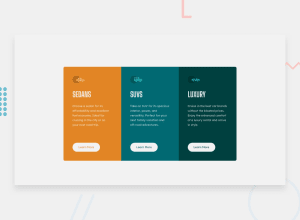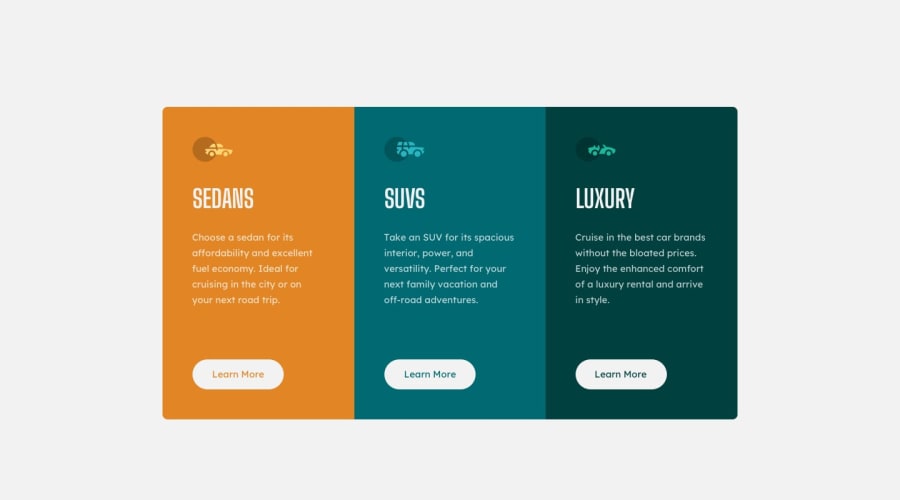
Design comparison
Solution retrospective
This was a nice project to build and I think I'm actually quite happy with it. If you think my code could be a little bit shorter, please let me know
Community feedback
- @adityaphasuPosted about 1 year ago
Hello, @gene2971!
You can use the following CSS to first of all center the card in the middle of the page by using flex on the body:
body{ min-height: 100vh; display: flex; flex-direction: column; align-items: center; justify-content: center; }- We use
min-height:100vhon the body because flexbox needs height to work upon and this will make sure the content is always in the center and doesn't cut off even if in landscape mode on devices.
Your CSS code is well written but here are a few tips to avoid repetition of code:
- Instead of using
font-family: var(--ff-text);andfont-weight: var(--fw-400);on several elements, you can add them just once on thebody.
I also took a look at the HTML file and you were on the right track with the commented anchor(
a) tags and ah1!- These are actually not buttons but anchor tags! So uncomment the anchor tag lines in your HTML and change the element selector in your CSS from
buttontoaand add one more CSS propertydisplay: inline-blockordisplay:blockto the existing CSS styles. (we addinline-blockorblockto anchor tags because by default they areinlineelements and paddings or margins wouldn't affect them if they areinline). - You can also uncomment the
h1and add the following CSS to it so that the HTML is more semantic and accessible :
`` position: absolute; width: 1px; height: 1px; padding: 0; margin: -1px; overflow: hidden; clip: rect(0, 0, 0, 0); white-space: nowrap; border-width: 0;- This will make the h1 hidden from the users but making it pretty accessible to SEOs and screen readers.
- And lastly, instead of using
divfor the.containeryou can use the<main>tag instead to add more meaning to the HTML (main tag basically lets the search engines know what the main content of the page is)
It was good to see that you were on the right track with the semantic HTML even though it was commented out ahah! also good job on the challenge! 🙌🏻
`Keep up the hard work and happy coding!🕺🏻**
Marked as helpful0@gene2971Posted about 1 year ago@adityaphasu
hello boots, firstly thank you for the feedback and secondly for the certain tips you gave To be honest, I was hesitating whether to use a-tag or a button and opted for the latter . Personally, I'm glad I'm finally out of that horrible "tutorial hell". LOL
have a nice weekend and happy coding
1@adityaphasuPosted about 1 year ago@gene2971 HAHAHAHA! Thing is I noticed the commented tags and I was like why'd they go with button they were spot on using a tags lmao
0 - We use
Please log in to post a comment
Log in with GitHubJoin our Discord community
Join thousands of Frontend Mentor community members taking the challenges, sharing resources, helping each other, and chatting about all things front-end!
Join our Discord
